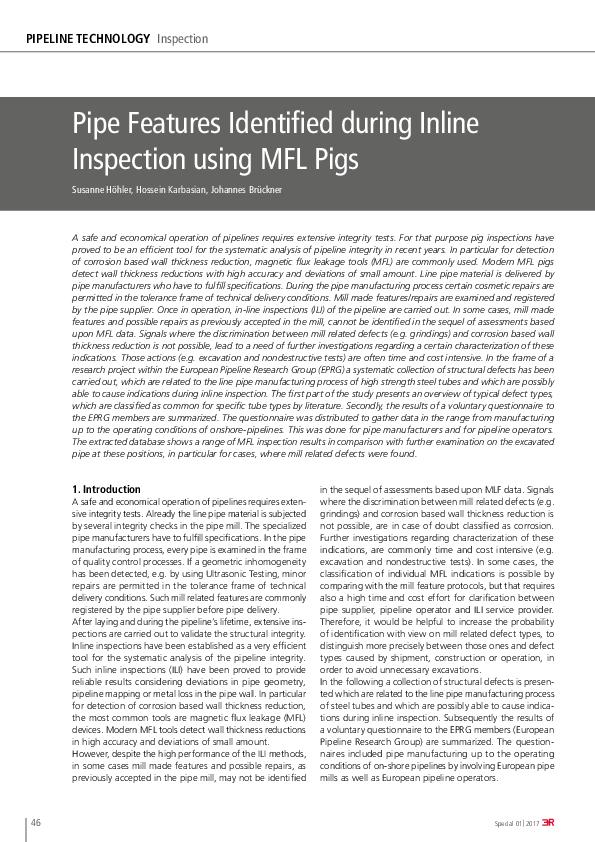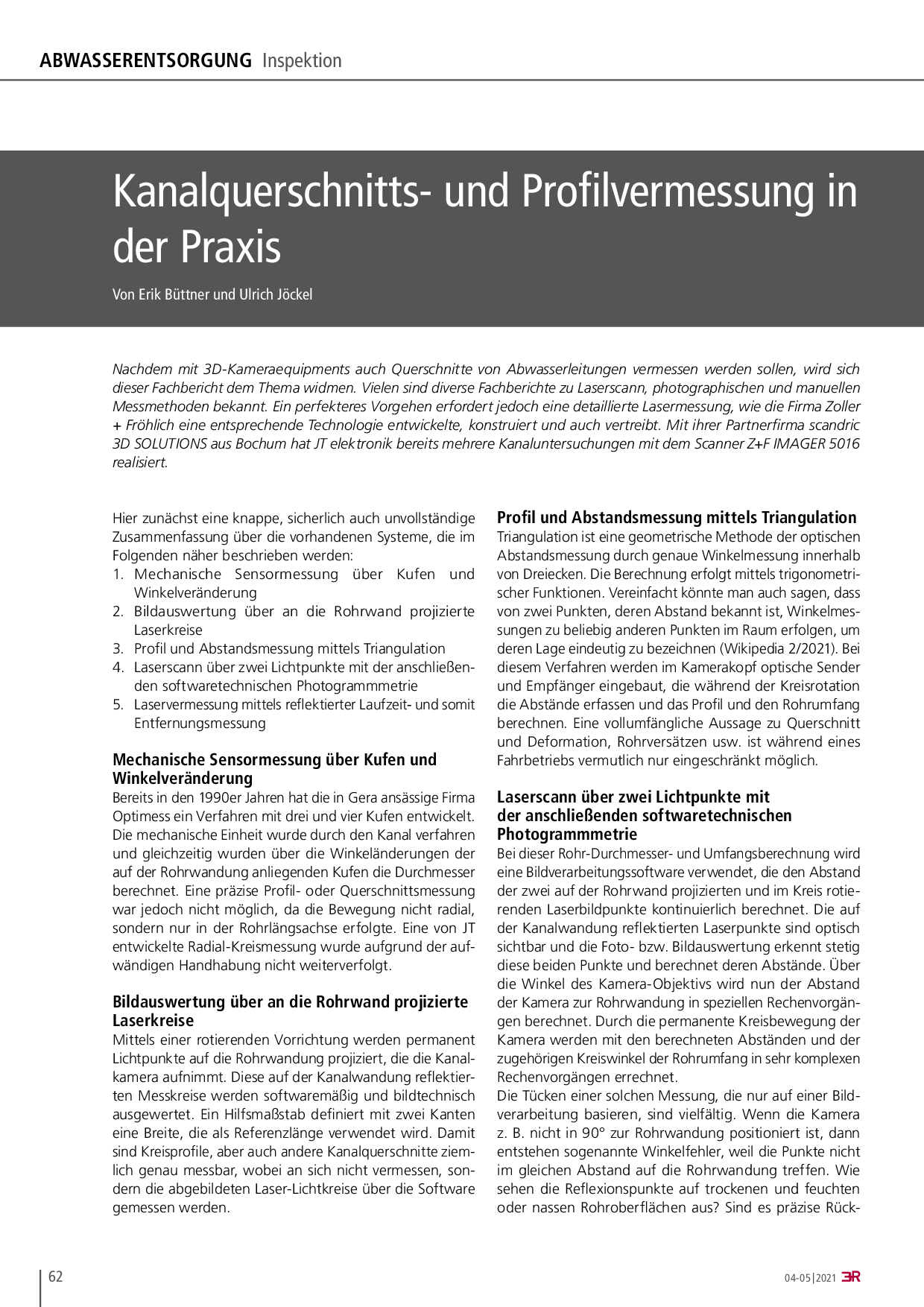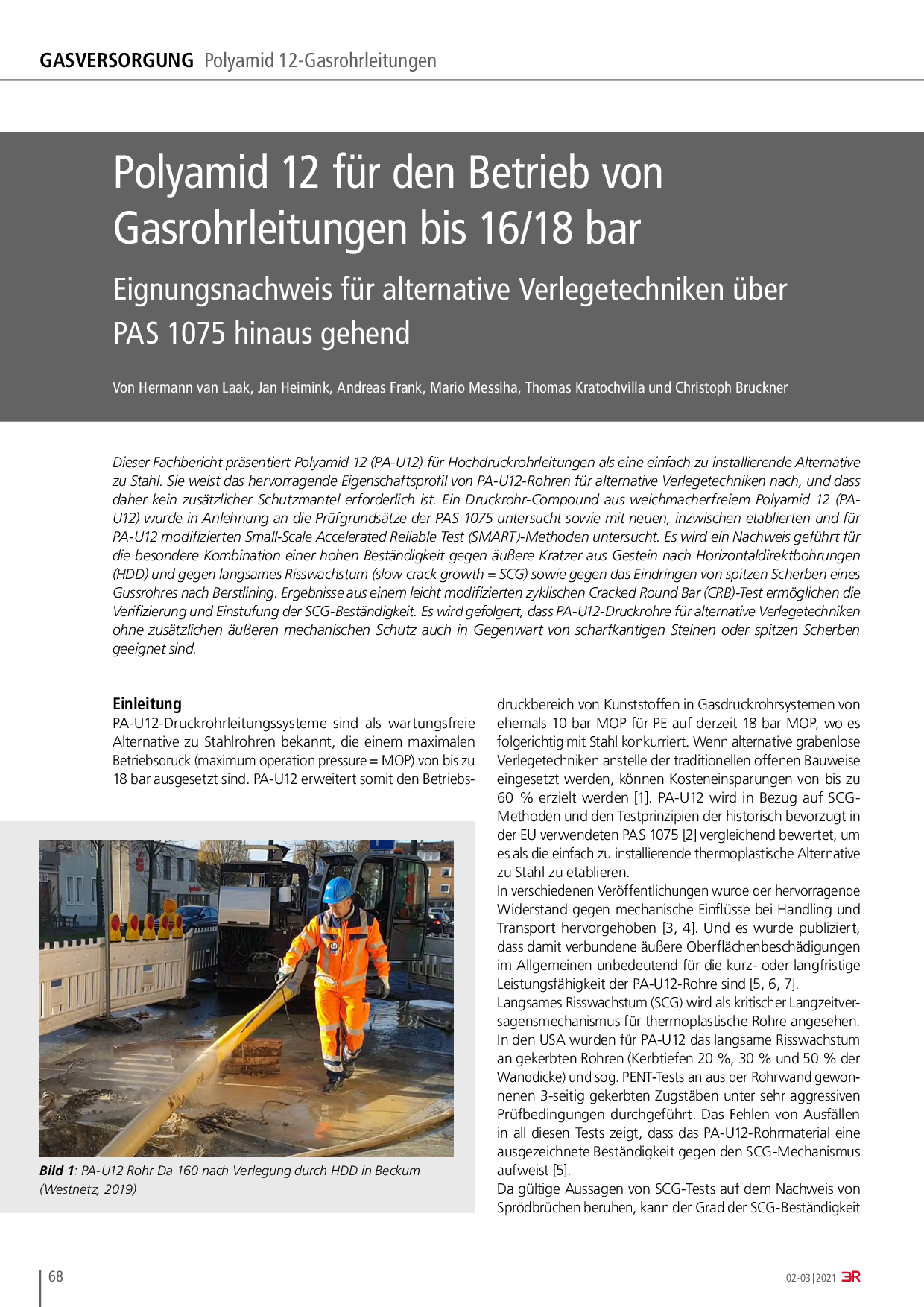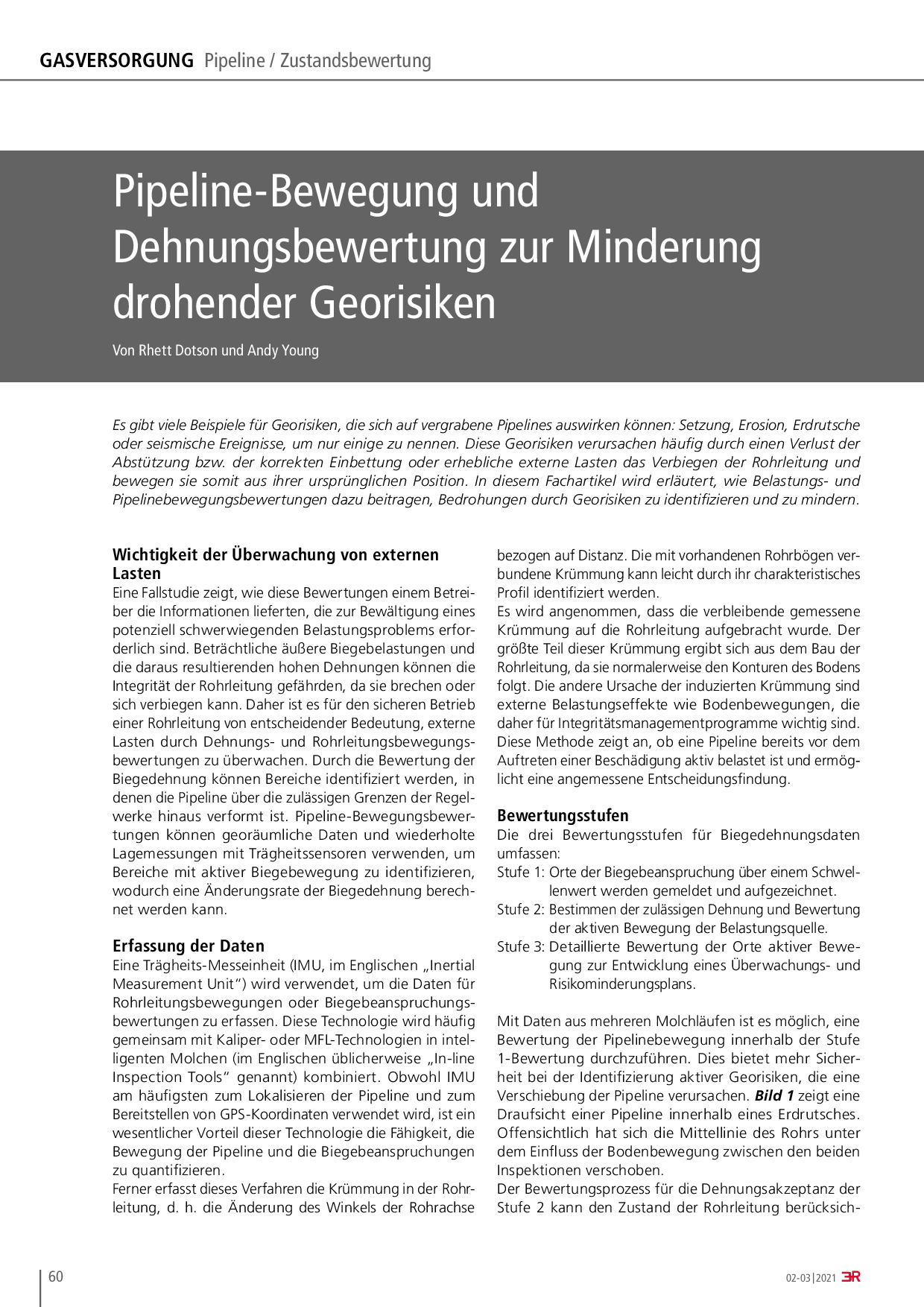Pipe Features Identified during Inline Inspection using MFL Pigs
Themen: Pipeline | Zustandserfassung
Publikationsform: Fachartikel
Artikelnummer: 01252_2017_SP1_03
Zeitschrift: Pipe Features Identified during Inline Inspection using MFL Pigs
Autor: Susanne Höhler / Hossein Karbasian / Johannes Brückner
Herausgeber: A safe and economical operation of pipelines requires extensive integrity tests. For that purpose pig inspections have proved to be an efficient tool for the systematic analysis of pipeline integrity in recent years. In particular for detection of corrosion based wall thickness reduction, magnetic flux leakage tools (MFL) are commonly used. Modern MFL pigs detect wall thickness reductions with high accuracy and deviations of small amount. Line pipe material is delivered by pipe manufacturers who have to fulfill specifications. During the pipe manufacturing process certain cosmetic repairs are permitted in the tolerance frame of technical delivery conditions. Mill made features/repairs are examined and registered by the pipe supplier. Once in operation, in-line inspections (ILI) of the pipeline are carried out. In some cases, mill made features and possible repairs as previously accepted in the mill, cannot be identified in the sequel of assessments based upon MFL data. Signals where the discrimination between mill related defects (e.g. grindings) and corrosion based wall thickness reduction is not possible, lead to a need of further investigations regarding a certain characterization of these indications. Those actions (e.g. excavation and nondestructive tests) are often time and cost intensive. In the frame of a research project within the European Pipeline Research Group (EPRG) a systematic collection of structural defects has been carried out, which are related to the line pipe manufacturing process of high strength steel tubes and which are possibly able to cause indications during inline inspection. The first part of the study presents an overview of typical defect types, which are classified as common for specific tube types by literature. Secondly, the results of a voluntary questionnaire to the EPRG members are summarized. The questionnaire was distributed to gather data in the range from manufacturing up to the operating conditions of onshore-pipelines. This was done for pipe manufacturers and for pipeline operators. The extracted database shows a range of MFL inspection results in comparison with further examination on the excavated pipe at these positions, in particular for cases, where mill related defects were found.
Verlag: Vulkan-Verlag GmbH
Seiten: 8
Publikationsformat: PDF
Themenbereich: Rohrleitungstechnik
Details
A safe and economical operation of pipelines requires extensive integrity tests. For that purpose pig inspections have proved to be an efficient tool for the systematic analysis of pipeline integrity in recent years. In particular for detection of corrosion based wall thickness reduction, magnetic flux leakage tools (MFL) are commonly used. Modern MFL pigs detect wall thickness reductions with high accuracy and deviations of small amount. Line pipe material is delivered by pipe manufacturers who have to fulfill specifications. During the pipe manufacturing process certain cosmetic repairs are permitted in the tolerance frame of technical delivery conditions. Mill made features/repairs are examined and registered by the pipe supplier. Once in operation, in-line inspections (ILI) of the pipeline are carried out. In some cases, mill made features and possible repairs as previously accepted in the mill, cannot be identified in the sequel of assessments based upon MFL data. Signals where the discrimination between mill related defects (e.g. grindings) and corrosion based wall thickness reduction is not possible, lead to a need of further investigations regarding a certain characterization of these indications. Those actions (e.g. excavation and nondestructive tests) are often time and cost intensive. In the frame of a research project within the European Pipeline Research Group (EPRG) a systematic collection of structural defects has been carried out, which are related to the line pipe manufacturing process of high strength steel tubes and which are possibly able to cause indications during inline inspection. The first part of the study presents an overview of typical defect types, which are classified as common for specific tube types by literature. Secondly, the results of a voluntary questionnaire to the EPRG members are summarized. The questionnaire was distributed to gather data in the range from manufacturing up to the operating conditions of onshore-pipelines. This was done for pipe manufacturers and for pipeline operators. The extracted database shows a range of MFL inspection results in comparison with further examination on the excavated pipe at these positions, in particular for cases, where mill related defects were found.
Preis: 4,90 €Zum Shop



